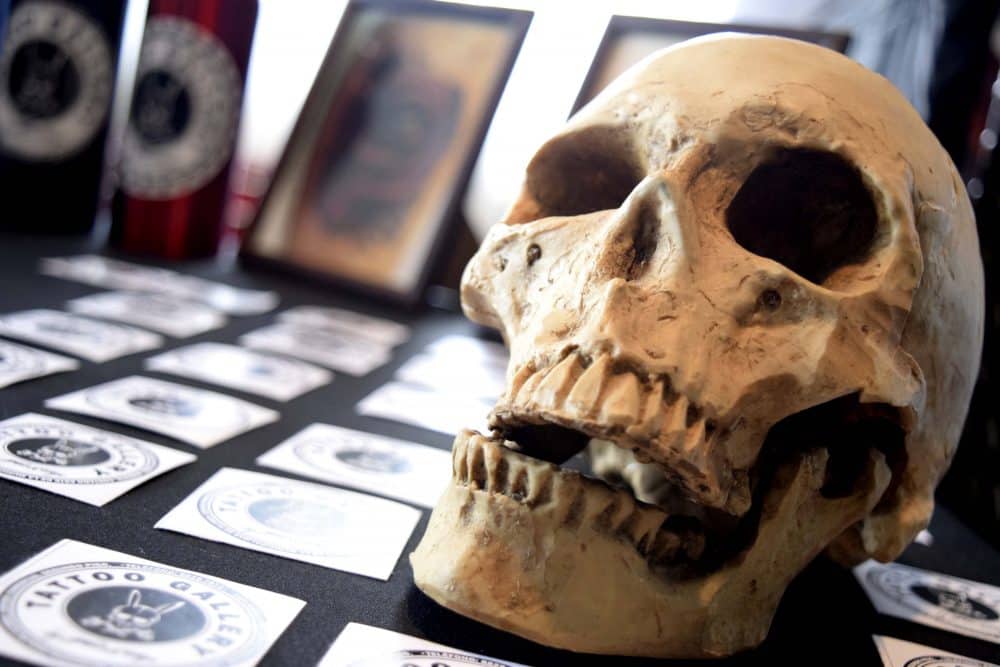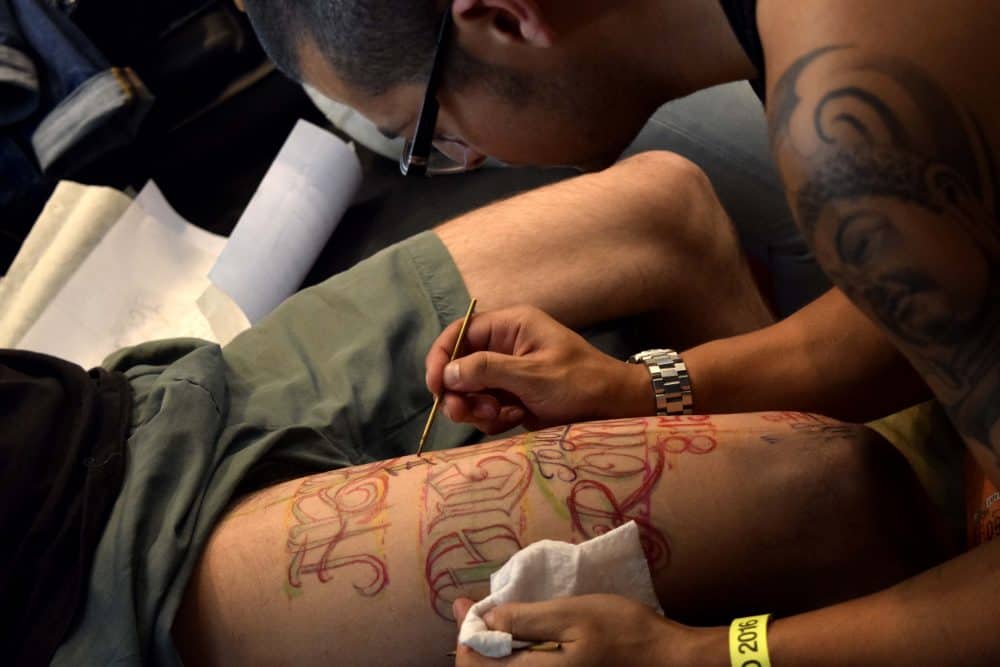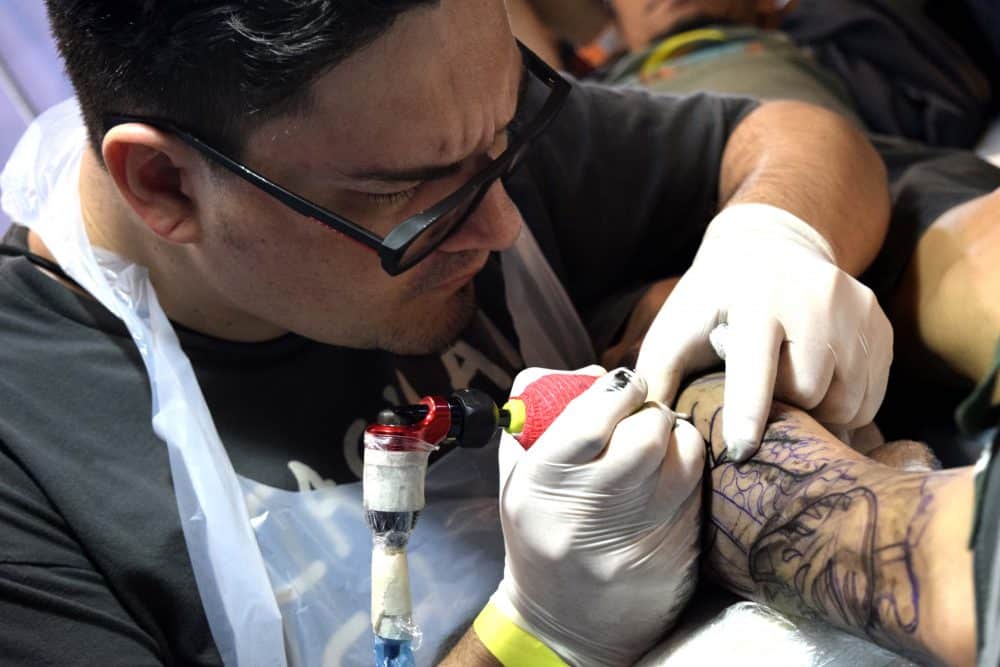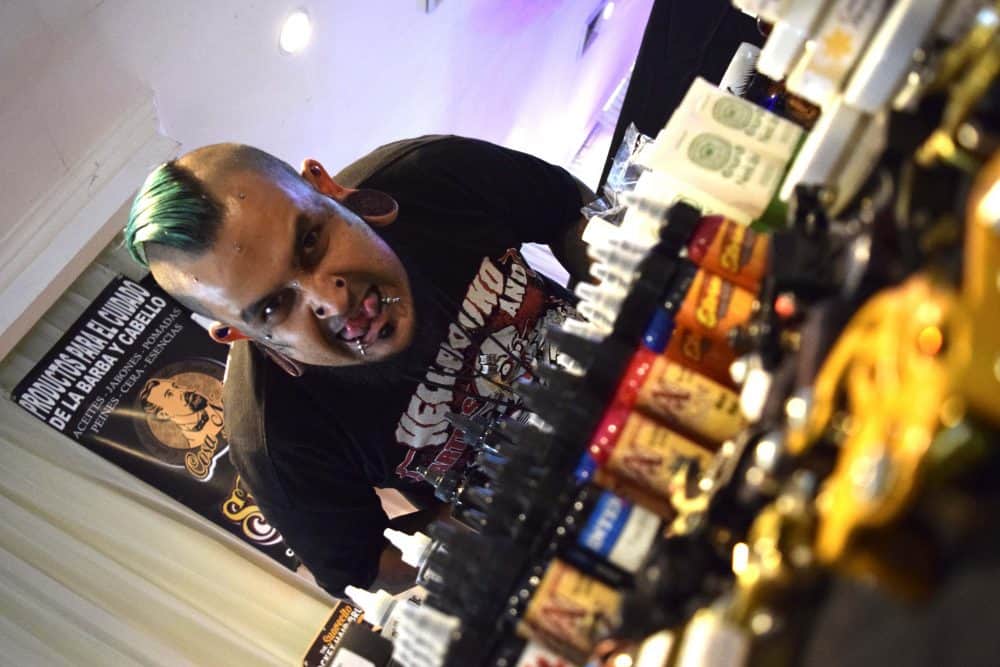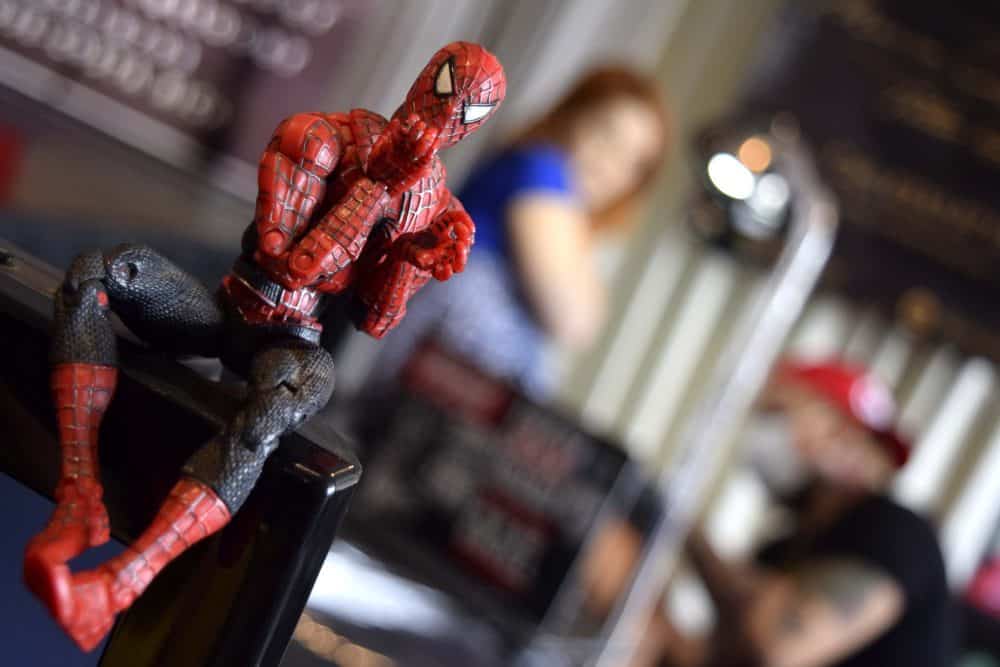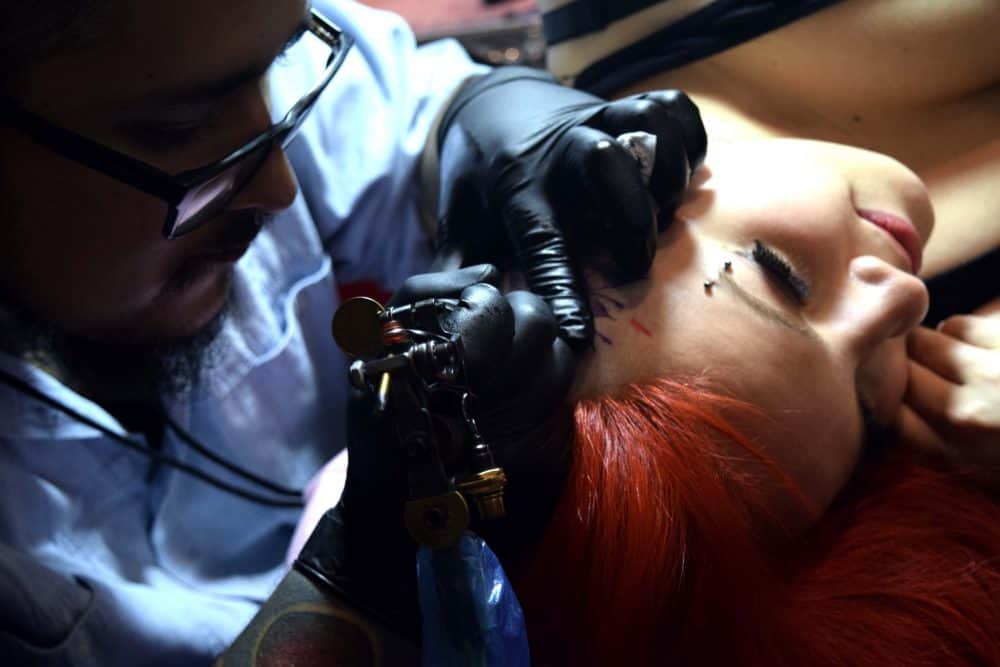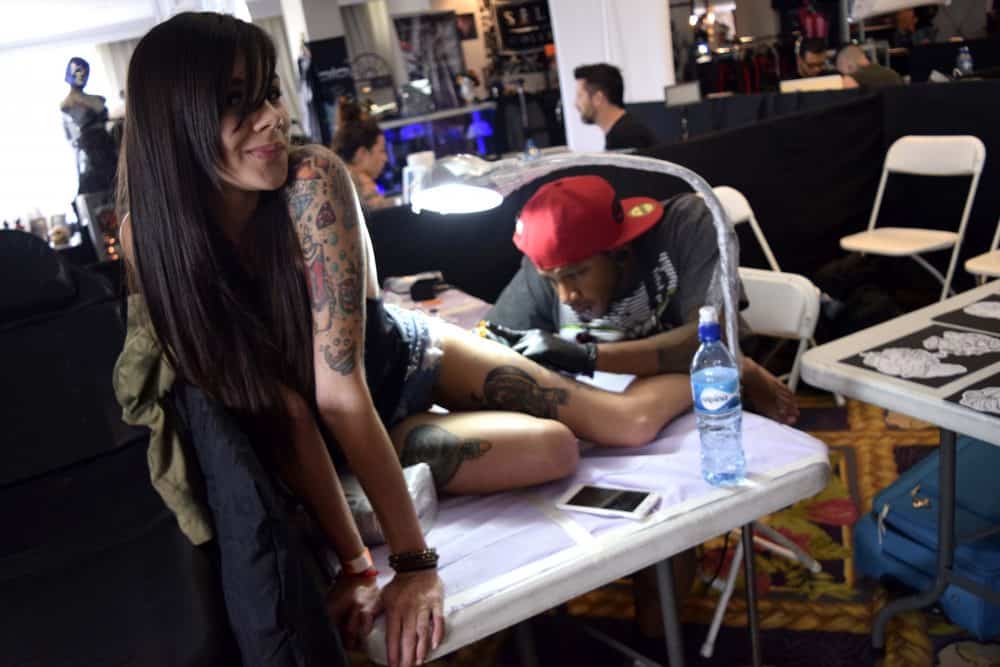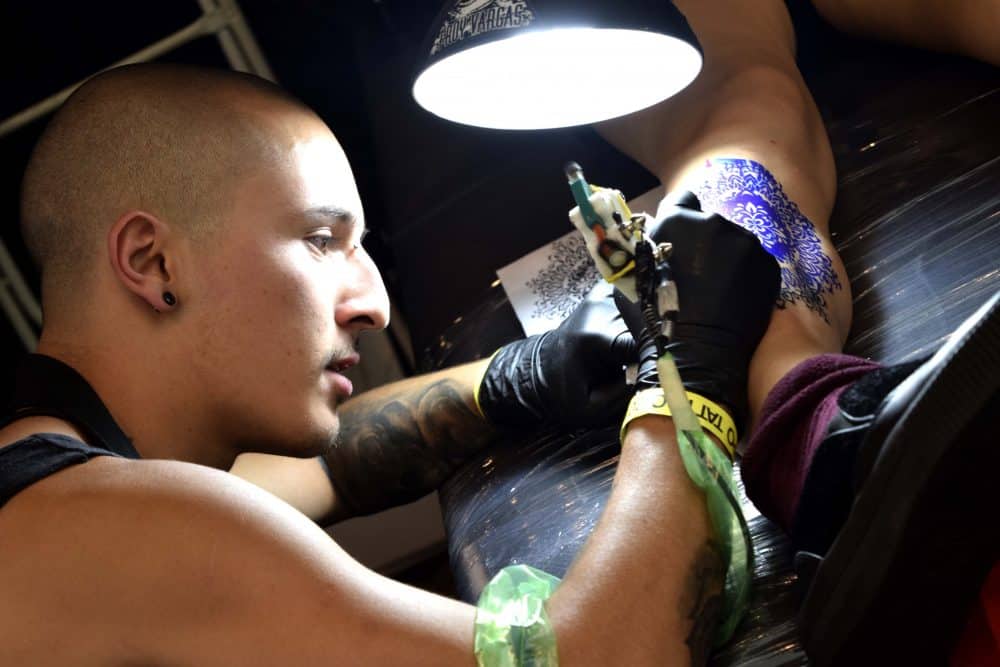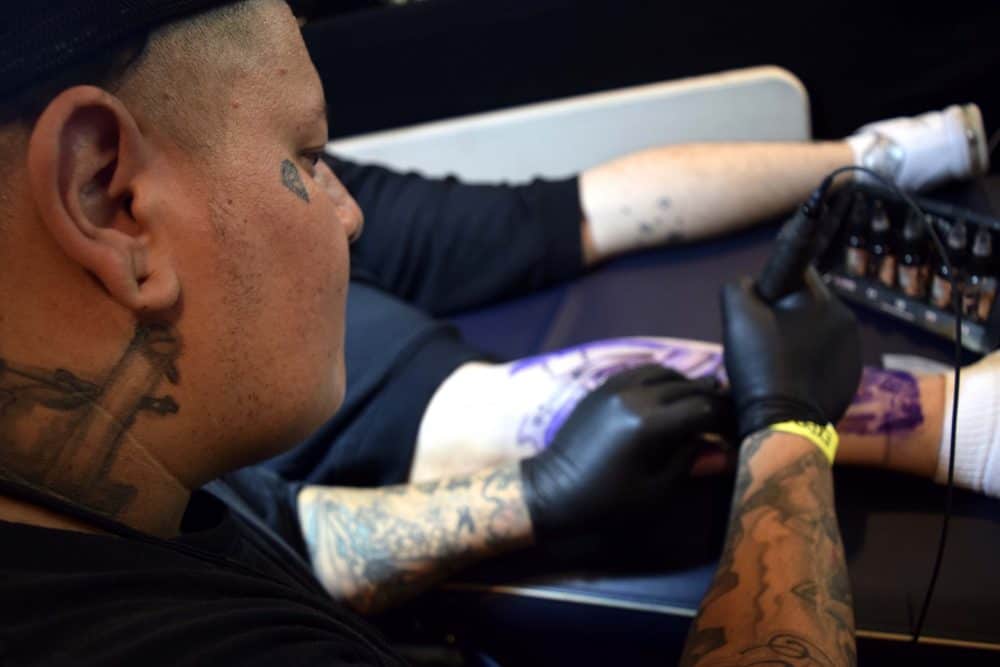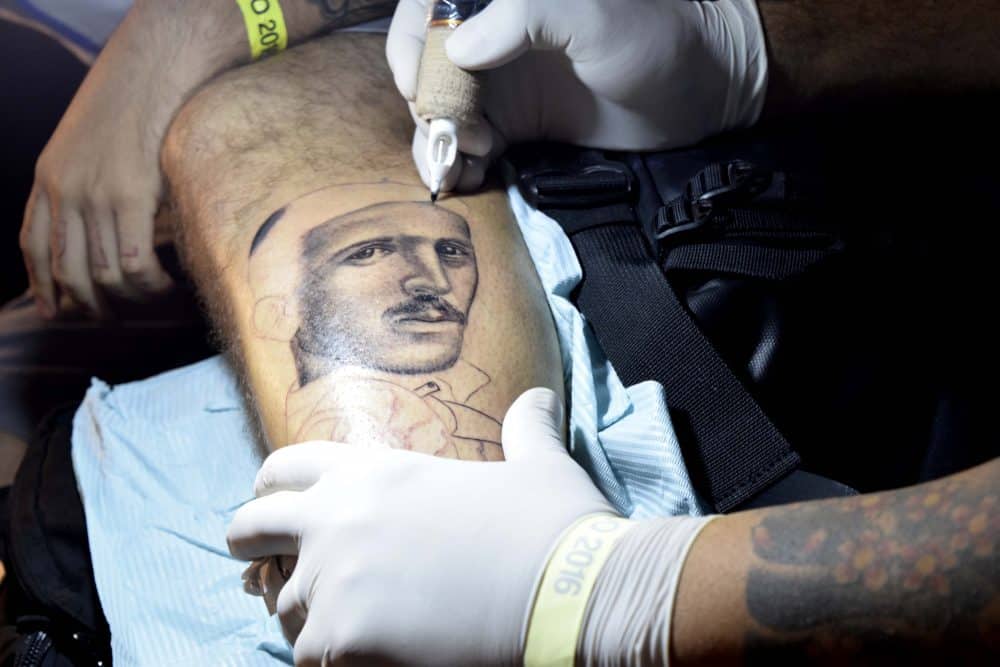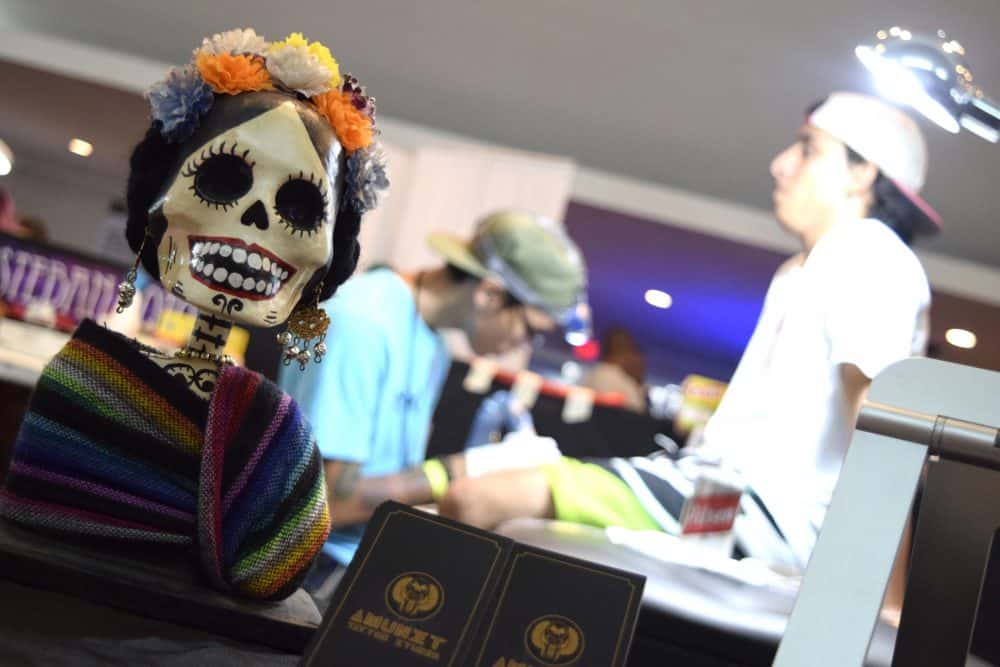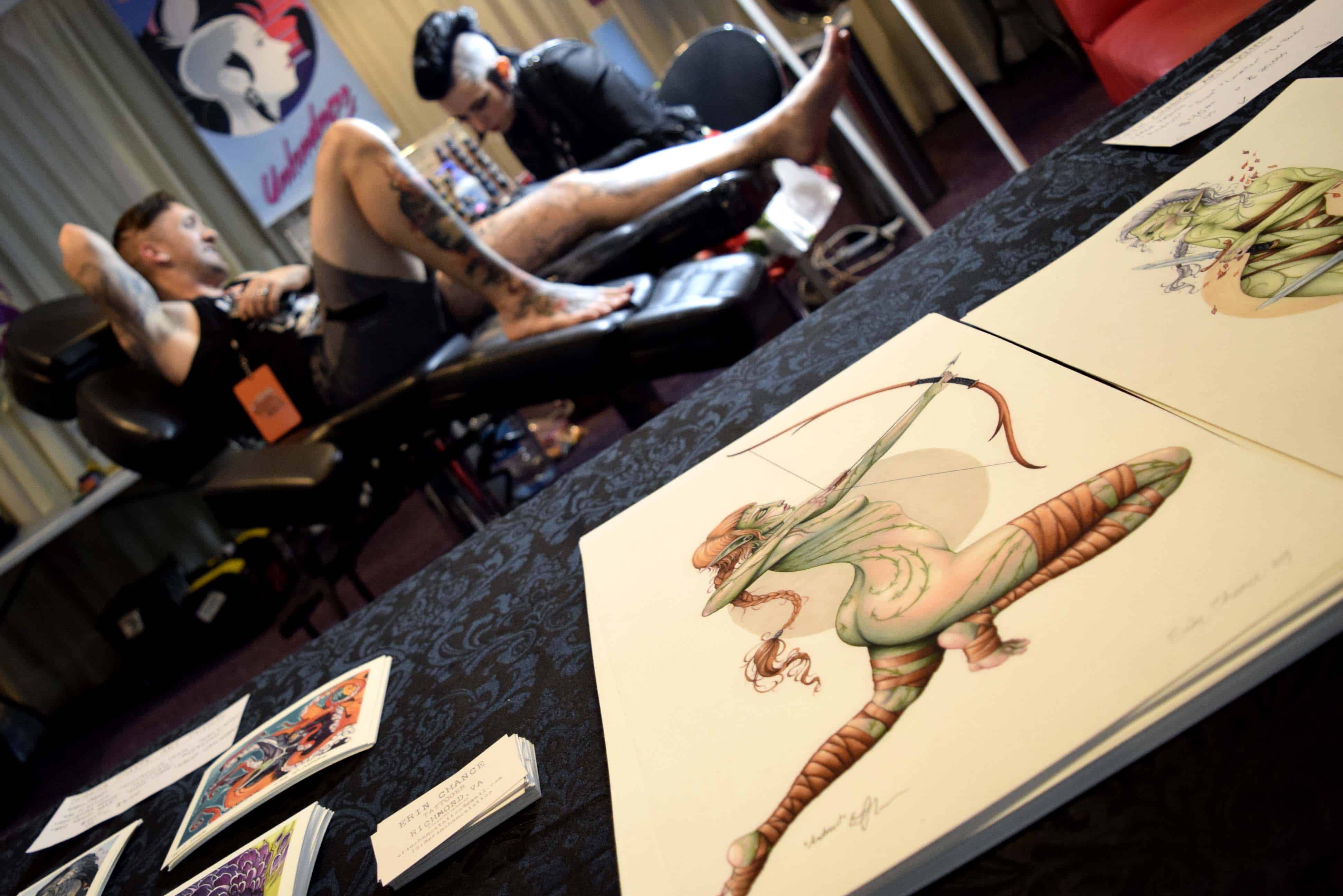During the past three days, Costa Rica was host of Expo Tattoo, a convention that brought together more than 200 Costa Rican and international tattoo artists.
The seventh edition of the event, held at the Cariari Country Club in Belén, Heredia, featured artists from Costa Rica, Argentina, Austria, Brazil, Colombia, Mexico, Nicaragua, Panama and the United States. The room was filled with various stands in which the common denominator was the sound of electric needles as they carefully inked people’s skin.
The first stand we saw belonged to Pablo Aguirre, better known as El Chivo Tattoo Artist, who was tattooing a man’s calf with a biomechanical design. Nearby, another Costa Rican tattoo artist, Froy Vargas, was calmly tattooing a young woman named Joanna Herrera. Herrera said that for her, getting tattoos is part of a lifestyle.
“I love the environment that the tattoo lifestyle entails. Maybe it’s about telling it like it is, without judgments. You won’t mind what others say when they see you in the streets,” Herrera told The Tico Times. “I have a daughter, and people often stare at me: not because of the tattoos, but because of the way I dress. I feel it’s a way in which you say whatever you want to say.”
Continuing through the convention, we came across U.S. tattoo artist Mike Spazbo, from California, and Trudy Lines Tattoo from Austria. Spazbo has been tattooing for some 20 years, and describes his art as being very realistic, based on the creation of detailed flowers. Trudy Lines, on the other hand, uses geometric designs in which lines and dots are important elements.
Geary Morrill is a Virginia-based artist whose designs are characterized by the use of vibrant colors and combination of unrelated elements. Morrill has been in the tattoo industry for 17 years and describes his profession as that of creating stories to be inked on the skin, the human canvas. Each one of his sessions lasts an average of seven or eight hours. Morrill also feels that the stigma behind tattoos has lessened over time.
“It’s much more culturally accepted. Maybe it’s not even as cool because of that. So many people like it, maybe it’s lost its edge a little bit, but I still love it. As an artist, there’s nothing else I could do where I get paid the way that I do, and have the freedom that I have, and still do what I like,” Morrill said happily.
